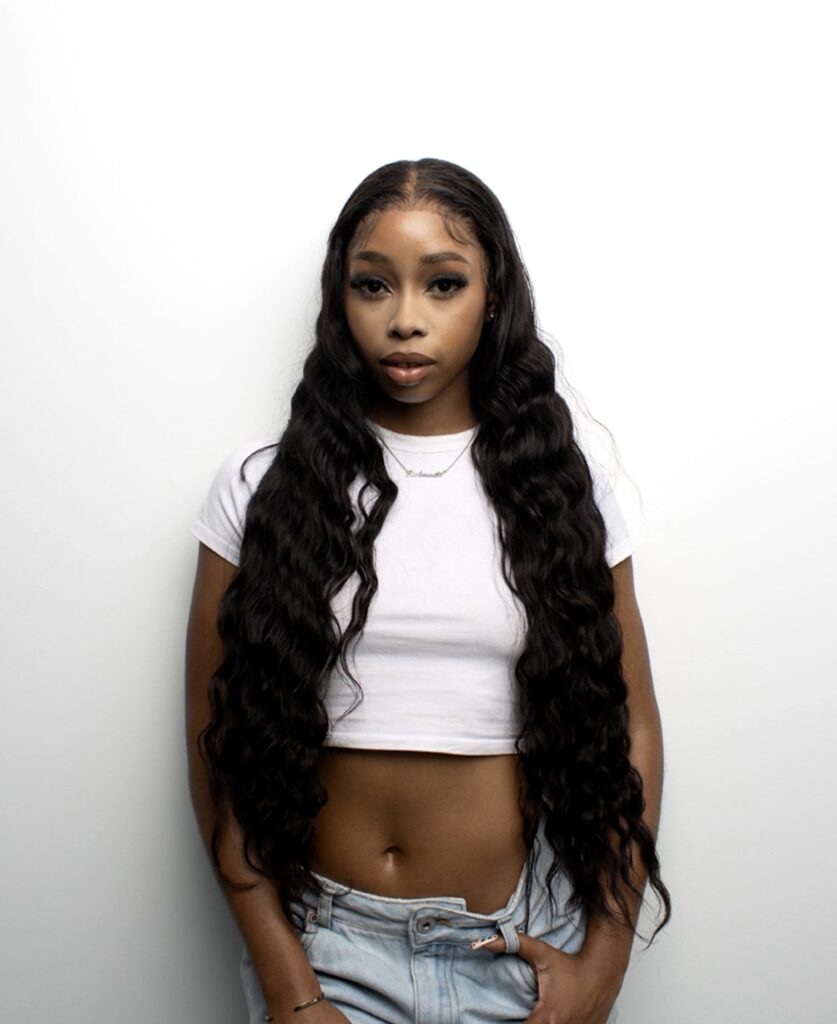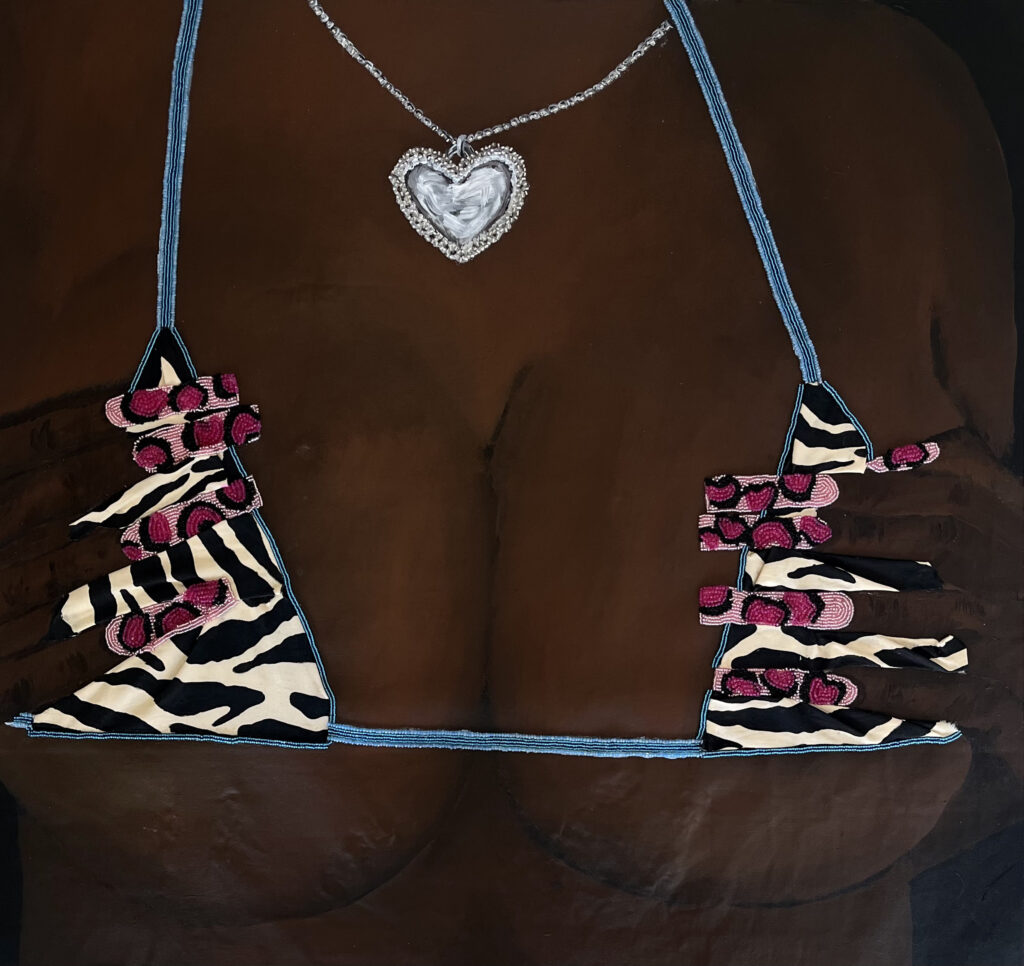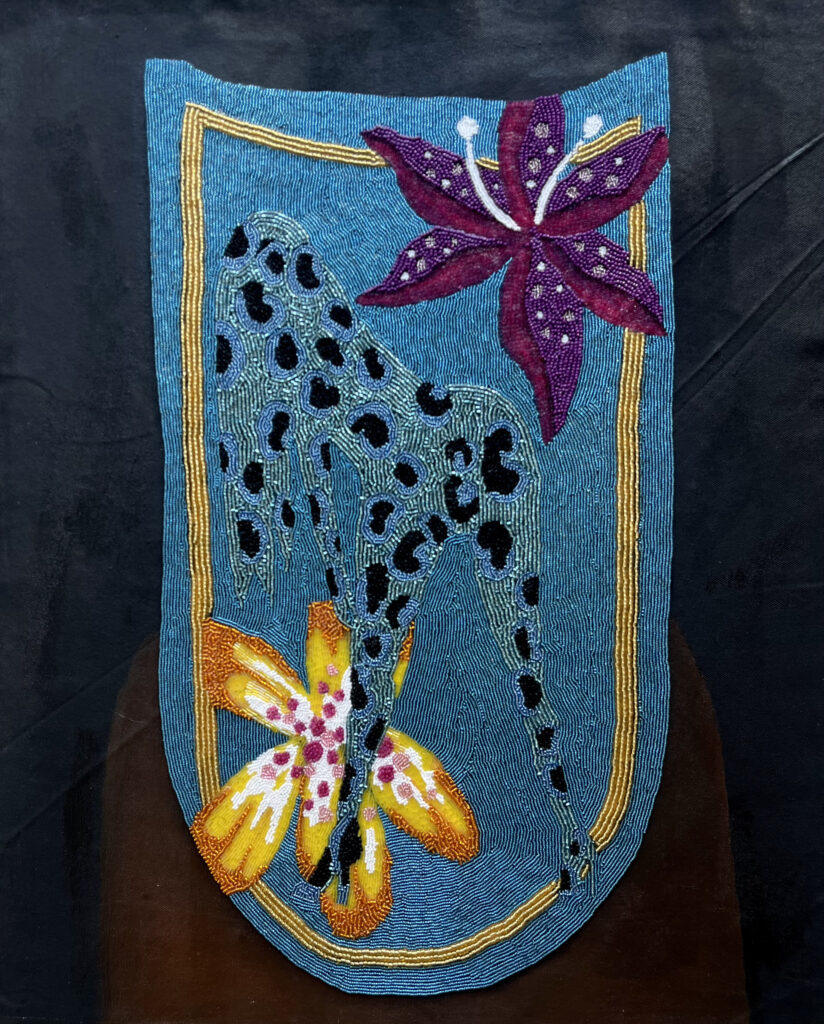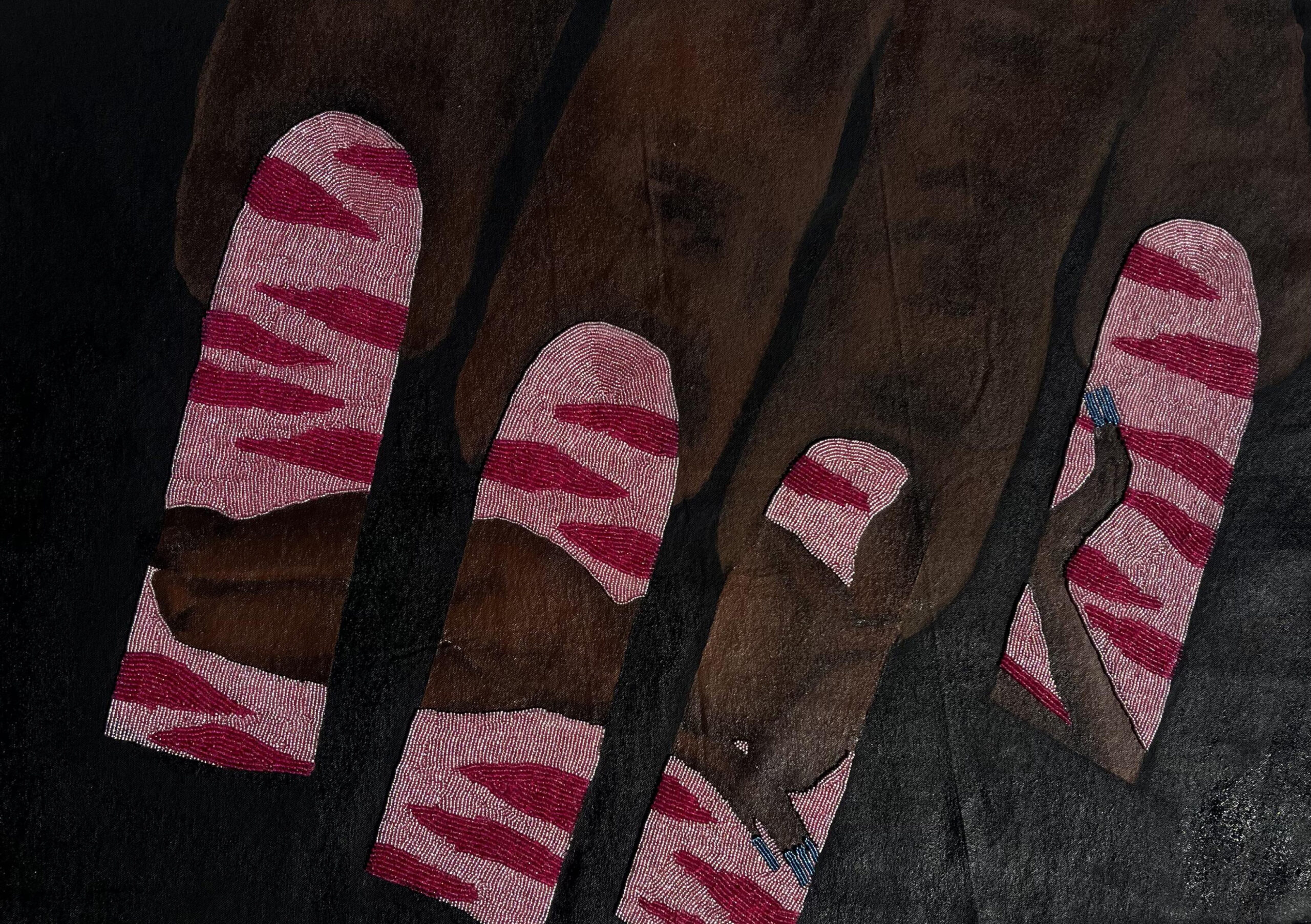At just 24, Johannesburg-based visual artist Sichumile Adam is making waves with a bold new body of work that reimagines Black girlhood on her own terms. Her latest exhibition, Sithi iGalz, which kicks off today at WORLDART in Cape Town, is a vibrant and unapologetic celebration of identity, femininity, self-expression and a refusal to shrink under the weight of respectability politics.
Rooted in personal experience and shaped by a deep sense of community, Sichumile’s art explores what it means to grow up as a young Black woman navigating the expectations and contradictions of both society and self. Her canvases are filled with colour, attitude and quiet defiance, often using details like nails, hair and fashion to assert autonomy and joy.
In this interview, she speaks to us about her influences, her time at Wits, and what drives her practice as she continues to carve out space for herself and others in the South African art world.

10AND5: When did you first know you wanted to be an artist? Was there a turning point or moment that made it feel real for you?
Sichumile: I’ve always been an artist at heart for as long as I remember. As a child, I loved watching animated shows like Winx Club, Totally Spies and Bratz. After every episode I’d sit down with my sister and redraw all the characters and cut them up. I was amused with the different animation styles, how the characters dressed, and how all their hair was different. It opened my eyes to a whole other fantasy world. Once I was a little more aware and conscious of my surroundings, I started noticing how women in my family and my immediate surroundings all mimicked these characters that I was so fascinated with. My mom with long black hair or my aunts with red wigs. They offered me an intimate experience of womanhood, expression and self-actualisation.
10AND5: What was your experience like studying Fine Art at Wits? How did that time shape your style?
Sichumile: I don’t take studying Fine Arts at a tertiary level for granted, especially at the Wits School of Arts. Pursuing my Honours degree meant that I was exposed to so many methods of art, from literature to music and film. I got an opportunity to explore these disciplines on an academic level that I would have never been exposed to. I also have to mention the community of artists and my peers I was introduced to in this journey. Those students, who are now the emerging and established women talents in this country, offered me so much support and allowed for me to witness their own unique and radical ways of creating, which gave me the confidence to produce art that was authentic to myself. Although the experience of being a Wits student came with its own challenges, the School of Arts and my community offered me a sheltered space to create art and go through all my phases while critically interrogating and engaging with the world around me.

10AND5: Sithi iGalz is such a bold title. What does it mean to you, and why did you choose it for this body of work?
Sichumile: Sithi iGalz, when translated from Xhosa, means ‘We are the girls’ and it is a play on the word City Girls. My art confronts all the connotations and stigmas associated with the identities of young Black women who self-actualise. Society labels us as ‘fast’, ‘baddies’ and ‘city girls’ in an attempt to make our existence derogatory, often equating us to promiscuity and jezebels, when in actuality our self-actualisation and autonomy grant us the freedom to explore our identities through sexuality and gender, which threatens the patriarchy. What I do with my art is to reclaim navigating all the complexes and contradictions that surround the representation of Black women, and the very act of self-actualising is such a beautifully bold and authentic practice of autonomy and reclamation. It was important for me to acknowledge and celebrate the Sithi Galz because these women are pioneering alternative ways of being.
10AND5: The quote about being “loud” so others can “exist in their silence” is powerful. What inspired that idea?
Sichumile: Black women inspired that thought, and Black women around me. It’s my friends, my sister, my mom. They all so unapologetically practise autonomy through dress, makeup and hair. Everyone does it so differently. And now with the access of the internet, we see so many girls rocking their hair in all sorts of styles and colours. We’re seeing all sorts of nail art and dress styles, and even just coming across that one girl on the internet, or painting, that alone inspires you to imagine and give yourself the courage to express yourself as well.

10AND5: How do you use elements like hair, nails, and fashion in your paintings to express identity and autonomy?
Sichumile: I love playing with the motif of nails in my paintings because it’s something that all women from every background have experienced and can relate to. Doing our nails is one of the first ‘girly’ activities we participate in. That act alone is practising autonomy. You pick the colour, you pick the length and shape. We can do the same with our image and how we want to represent and express ourselves.
10AND5: Your work challenges stereotypes placed on Black girls, especially around sexuality and respectability. Why is it important to make that visible?
Sichumile: This is the core message of my paintings. Having our journeys from girlhood into womanhood being viewed through the lens of promiscuity creates a vulnerable and confusing space to navigate—especially before we grasp the concept of our sexualities and identities. Being subjected to respectability politics denies us the freedom to explore sexuality as a means of self-discovery and identity. Instead, it forces us to conform to an imposed identity of what it means to be a Black woman, silencing the ability to shape our own subjectivity, which we all have the right to.

10AND5: What inspires your visuals? Are there personal stories or references in the work?
Sichumile: My art imitates my life and all my lived experiences with navigating life with my friends. They’re all very intimate, flirty and youthful exchanges within our journeys into womanhood. Some paintings feel like sleepovers and girl talk, and some express emotions of solace in one’s own company.
10AND5: Are there artists, writers, or thinkers, past or present, who’ve helped shape the way you see the world?
Sichumile: I was fortunate enough to work closely with Gabrielle Goliath in my last two years in school. She’s an artist I admire dearly and had known of her since I was a student in high school. Gabrielle mentored and shared with me an abundance of knowledge and wisdom which I still apply in my art practice today. She introduced me to a multitude of writers and thinkers, and she taught me how to critically engage and challenge my own ideas and beliefs in art. The community of women artists that I am exposed to fuels my ambitions with art and self-expression. Seeing artworks from artists like Boemo Diale, Zandile Tshabalala, and collective members of VETO – Chuma Adam and Buqaqawuli Nobakada – opens new possibilities for all of us to resonate and engage deeply with authentic art with deeply rooted narratives.
10AND5: What’s the hardest part about being a young Black woman in the art world and how do you push through it?
Sichumile: The hardest part of being a young Black woman in the art world is being a young Black woman in the art world. I often have to validate and convince people of my presence and participation within art spaces despite my academic qualifications. Expressing alternative narratives of Black women as boldly as I do — together with interrogating all these stereotypes and politics that exist within our society today — is also a conversation not many want to have out loud, which can be difficult for people to engage honestly with.
10AND5: What advice do you wish someone had given you when you were just starting out?
Sichumile: To be unapologetically Black and not to try to be digestible to everyone. There’s magic and beauty in our essence.
- You can catch Sithi iGalz at WORLDART, 68 Long Street, Cape Town, from Thursday 3 July. The exhibition offers a moving, multifaceted look at Black girlhood and the quiet power of reclaiming your story, on your own terms. Don’t miss it.




